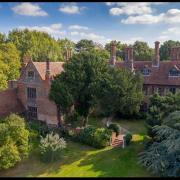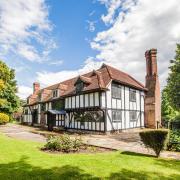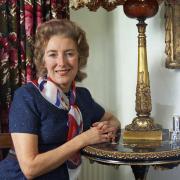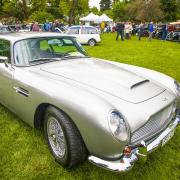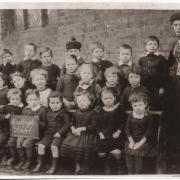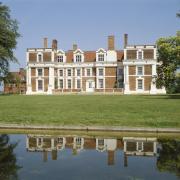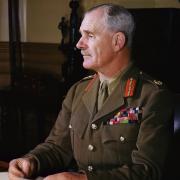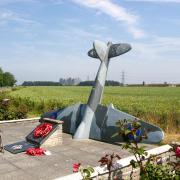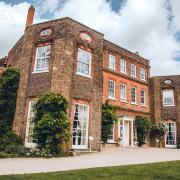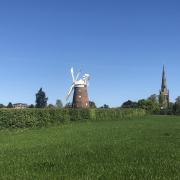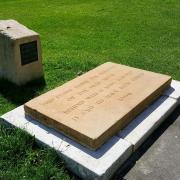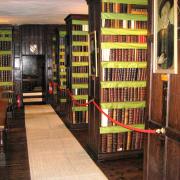Not only are we celebrating the Queen’s platinum reign this year, but also 70 years of Essex Life. In this series, Stephen Roberts delves into the historic events and famous faces that have shaped the county since our launch in 1952. Here, we travel back in time to the seventies
After the swinging sixties came the strikes of the seventies; it was a decade of industrial unrest. An electricians’ strike in 1970 saw petrol pumps at White Service Station, Ongar, redundant until a Heath Robinson-inspired solution solved the problem: a converted bicycle for manual pumping. Any motorist happy to do their own pedalling earned quadruple stamps!

On the world stage
The ’70s saw the Watergate scandal in the U.S. (1972), leading to the resignation of the 37th president ‘Tricky Dicky’ Richard Nixon and also the ending of the Vietnam War (1975). This side of the pond, we had the advent of decimalisation (1971) followed by the UK joining the European Community in 1973, a decision ratified in a referendum two years later. We didn’t know the ‘fun’ that was to come with Brexit more than 40 years later.
One bright spot was the Queen’s Silver Jubilee in 1977. Another, but only if you’re a sun worshipper, was the heatwave of 1976. I remember it well. It was my first year at teacher training college and I resorted to studying in the nude. The first IVF baby, Louise Brown, was born the same year.
Strikes christened the decade and were there at its end too. The so-called Winter of Discontent, an allusion to Shakespeare’s Richard III, took place over the winter of 1978-79, with widespread strikes occurring. Ford Workers walked out in November 1978, with a mass meeting at an open-air swimming pool in Dagenham with Ford’s union officials claiming the overwhelming show of hands was in favour of continuing with the strike. I guess it’s possible someone might have asked who fancied a hot cuppa on a cold day and all the arms shot up.

Getting political
The Conservatives were back in power in 1970 under Edward Heath. The vote in Essex saw some Conservative gains, including Epping, won by the pugnacious Norman Tebbit, as well as Hornchurch and Billericay, although Labour was still very much holding its own in our corner. Then 1974 saw a change of government with Labour winning not once but twice, the first election returning a minority Labour government, the second securing it a small majority. The prime minister was now Harold Wilson.
It was the decade of Heath and Wilson, lampooned by impressionist Mike Yarwood who made them seem a lot more fun than they really were. Although Labour now had the upper hand nationally, albeit narrowly, it was different in Essex where only Harlow, Thurrock and Basildon returned Labour MPs. By the time of the 1979 election, the Heath-Wilson era was over and it was a contest between Margaret Thatcher and Labour’s ‘Sunny Jim’ Callaghan. It was Maggie who was all smiles when the votes were counted, becoming the UK’s first female prime minister. Basildon, a working-class bastion, turned blue as the country went nuts for Maggie.
In 1975, there’d been that referendum on our continuing membership of the European Community. Unlike its 2016 equivalent, this was no close-run thing. Nationally, 67.23 per cent voted to remain in. In Essex it was much the same, with a whopping 67.7 per cent saying we were better off in than out. In a reversal of roles compared to the recent past, it was Conservative PM Edward Heath who’d campaigned to get us in and Labour PM Harold Wilson who insisted on a referendum to see if we should leave in double-quick time. There’s nought so funny as politics.
There were by-elections in Essex. The Thurrock by-election (1976) and Saffron Walden by-election (1977) were Labour and Conservative holds respectively, but the one attracting the most attention was that at Ilford North in 1978, when Margaret Thatcher, by then Conservative Party leader, was out campaigning, with Roy Hattersley also campaigning on behalf of Labour candidate Tessa Jowell. In the event, it was the Conservatives who grabbed the seat off Labour. Tory candidate Vivian Bendall won with a swing of 9.43 per cent, a blow to Sunny Jim’s government with the general election coming the following year. Where Essex leads the UK follows.
Local happenings
If the 1950s and ’60s had seen a rush to modernism with new towns, tower blocks and shopping centres sprouting up, then the major new development of the 1970s harked back rather than forward. In 1972, Essex County Council began work on a new development south of Woodham Ferrers, coming up with the rather intuitive name of South Woodham Ferrers. Described as a new ‘riverside country town,’ it harked back to some sort of pseudo pastoral rustic charm with a resurgence in weatherboarding rather than the slapping down of ubiquitous concrete. More garden town than the new town of the immediate post-war era, it was recognition that people not only needed decent homes but decent environments to go with them. South Woodham Ferrers became arguably one of Britain’s best-designed towns.

Not everything was rosy though. There was a crime spree in Romford at the decade’s dawn with the residents of Turpin Avenue having their houses turned over in October 1970. One’s tempted to say Dick Turpin must have been behind it. Anyway, the residents were canny and had two dozen guard dogs between them maintaining a scowling watch. The trouble was, they all seemed to doze through the burglaries – perhaps they fed them too much Bonio.
Firefighters tackled a blaze in the library at Chelmsford Prison in March 1978, whilst the Royal Engineers were on duty in April 1979, digging out an unexploded 500kg WW2 bomb in Epping Forest, believed to have been part of the payload of a German Junkers 88 aircraft.
On a humorous note, a dinosaur was spotted on Essex roads in January 1973. It was 16 foot high and 45 foot long. The Cetiosaurus was en route from Ramsgate to Scotland where a prehistoric park was being opened. Having travelled through the Dartford Tunnel, the lumbering beast was spotted along the Old Southend Road (presumably on a low-loader and not hoofing it up the carriageway). I’ve researched and you don’t need to worry; the Cetiosaurus was a quadruped (four-legged), long-necked, small-headed bod and was reassuringly a herbivore.
Essex in pop culture
The seventies saw the start of the disco era with the release of Saturday Night Fever (1977), ABBA’s Waterloo topping the charts (1974), the end of the Beatles (1970) and the death of Elvis (1977). The Weeley Festival, held outside Clacton in August 1971, degenerated into a battle between security men and Hell’s Angels. The Faces, T-Rex and Status Quo all performed. Billericay Dickie was released by Ian Dury and the Blockheads in 1977, and is narrated by ‘a bragging bricklayer from Billericay’. The 1970s was also the era when gay liberation took hold.
In 1975, journo Monty Modlyn (1921-94) visited Harlow for a Thames Television documentary getting locals’ views of living in the town, while Abigail’s Party (1977), a play by Mike Leigh, also hit the small screen in this decade. Set in Romford, it looked at the new individualism taking shape on the capital’s fringes, the invention of modern Essex you might say. Alison Steadman played Beverly, who was perhaps the original Essex girl. When the popular TV series Porridge morphed into a film (1979), all interior shots were filmed at HM Prison, Chelmsford.

John Roy, 65, was the proud owner of Europe’s longest moustache. A descendant of Scottish folk hero Rob Roy and landlord of The Cock Inn, Beazley End near Braintree, John entered the Guinness Book of Records with his five-foot-long growth.
Very sporting
Aptly in Silver Jubilee year, Virginia Wade won the Ladies’ Singles at Wimbledon in front of the Queen. Also in 1977, another sporting icon, boxer Henry Cooper, visited Woolworth’s in Harlow to promote Brut 33 products; the ever-popular ‘Our Henry’ was mobbed!
There were further reasons to be bragging in Billericay as the local football team, Billericay Town, won three FA Vase finals in four seasons at Wembley (1976, 1977 and 1979). Southend United held mighty Liverpool to a goalless draw in the FA Cup at Roots Hall (1978-79) before losing a replay at Anfield. Reg White, born in Brightlingsea in 1935, was a gold medallist in the sailing at the 1976 Montreal Olympics. Most memorably of all though, Essex won its very first County Cricket Championship in 1979.
New faces

There was a plethora of Essex stars born in the 1970s: Russell Brand (1975, Grays), chef Jamie Oliver (1975, Clavering), Eastenders actresses Jo Joyner (1977, Harlow) and Rita Simons (Whipps Cross, 1977), game show hosts Ben Shephard (1974, Epping) and Richard Osman (1970, Billericay) were all destined for our small screens. Musician Jamie Cullum was born in 1979 in Rochford and there was also a trio of sports stars born in Essex during the seventies: Olympic swimmer Mark Foster (1970, Billericay), Sam Smith, the British Ladies’ No. 1 tennis player (1971, Loughton) and England footballer Luke Young (1979, Harlow).
You may also like...
Essex in the 1960s: https://www.greatbritishlife.co.uk/lifestyle/heritage/essex-in-the-1950s-9036384
Essex in the 1950s: https://www.greatbritishlife.co.uk/lifestyle/heritage/history-of-essex-in-the-1950s-8949858





